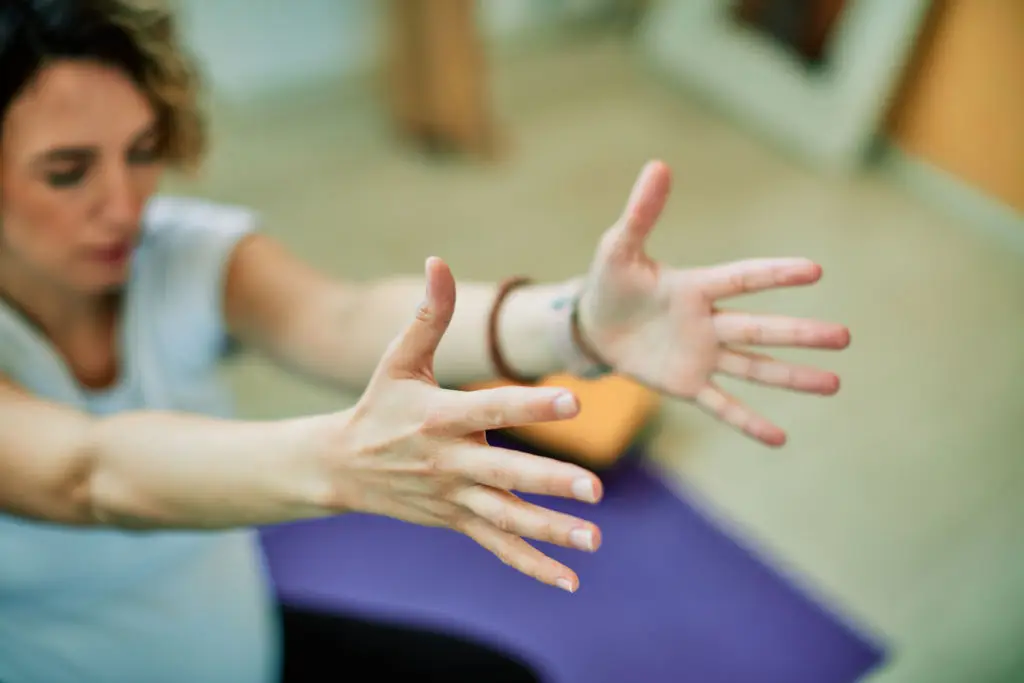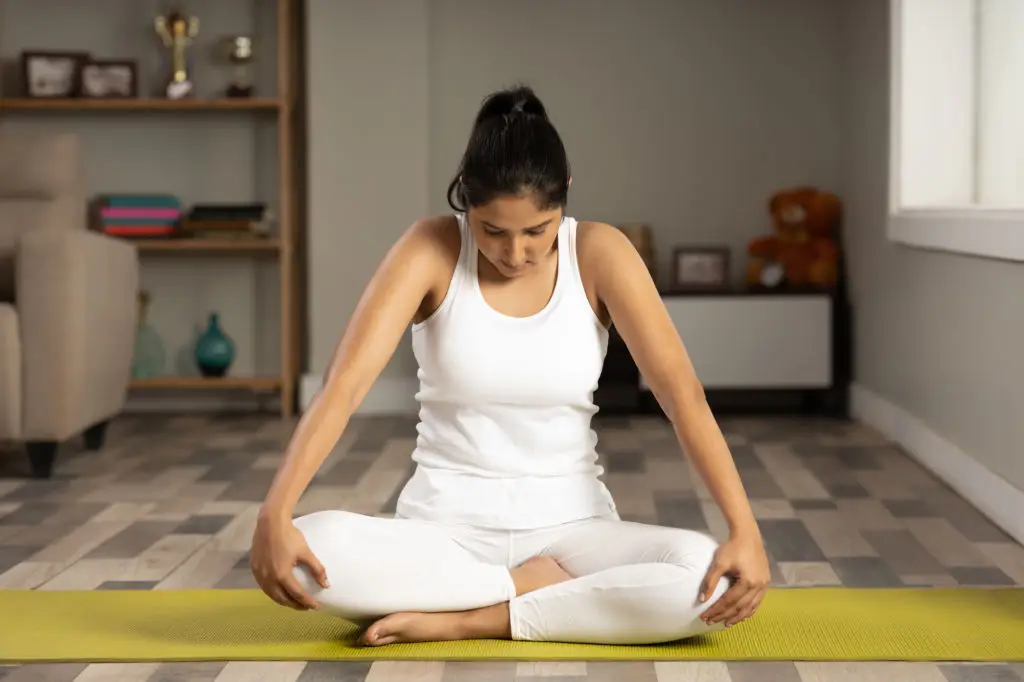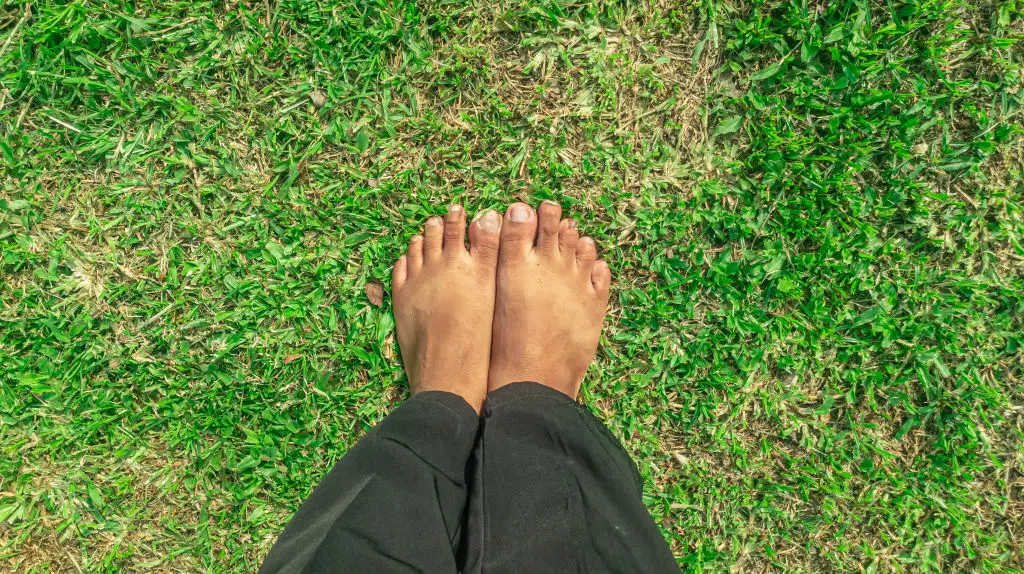15 Mindful Micro-Moments That Instantly Relieve Anxiety
Anxiety can sneak up on us at the most unexpected times—during a busy work shift, in a quiet moment at home, or even while we’re trying to unwind. If you’ve ever wished for an “off switch” that could help dial down stress or refocus your mind, you’re not alone. The truth? Feeling anxious is part of being human, and building a mindful response doesn’t have to mean setting aside hours or having a quiet retreat. That’s where micro-moments come in. These are gentle, science-backed practices—often just seconds or a couple of minutes long—that can ground, soothe, and support us through those tough moments. Imagine being able to hit reset right where you are—at your desk, in your kitchen, even while shuffling between errands—without pressure or perfection. Each micro-moment in this list is designed to fit seamlessly into your life, no matter your schedule, mobility, or environment. They aren’t quick fixes, but with practice, their small shifts can ripple outward, easing anxiety and helping you feel more anchored. This article isn’t about achieving flawless calm or never facing anxious thoughts again. It’s about building up a toolkit—one mindful breath, one sound, one gentle pause at a time—to help you move through whatever comes your way. Pick and choose the ones that feel right for you (and remember, there’s no “wrong” place to start). The journey toward feeling lighter can begin with just a single mindful moment.
1. The 5-4-3-2-1 Grounding Technique

When anxiety clouds your mind, orienting yourself with the 5-4-3-2-1 technique can bring swift relief. This simple sensory practice starts by naming five things you can see wherever you are—a bright mug, the flicker of light on the wall, a plant, a book cover, a passing cloud. Next, notice four things you can feel, such as the warmth of your sweater, your feet on the floor, a ring on your finger, or the gentle support of your chair. Then, listen for three distinct sounds. Maybe it’s the low hum of an appliance, the distant voices outside, or the subtle rhythm of your breath. Shift to two things you can smell, whether it’s fresh coffee, hand soap, or the crisp air. Finally, bring attention to one thing you can taste, perhaps a sip of water or a lingering flavor from lunch. Why does this work? Engaging the five senses diverts focus from racing thoughts and ushers your awareness into the “right now.” Therapists often teach this as a grounding anchor because it’s easy, portable, and science-backed—it activates a calmer state in your brain. You can use it discreetly at work, during stressful commutes, or any time you need to gently come back to yourself. With practice, the 5-4-3-2-1 method can become your go-to tool for navigating anxious moments and resetting your sense of safety.
2. 60-Second Belly Breathing Reset

Sometimes the quickest path to calm is through your own breath. The 60-second belly breathing reset is as straightforward as it sounds: Place one hand on your stomach, let your shoulders drop away from your ears, and take a slow, deep inhale until you feel your belly gently expand. Hold for a pause, then exhale completely—letting tension leave with your breath. Repeat this simple process for about a minute, without any pressure to do it “perfectly.” Even if your mind drifts, bring it back to the sensation of your stomach rising and falling. Research shows that deep belly breathing activates your body’s parasympathetic nervous system—helping slow your heart rate, lower blood pressure, and reset frazzled nerves. This technique works whether you’re at your desk, standing in line, or settling into bed. It’s powerful for those moments when anxiety feels overwhelming yet invisible to anyone around. Each slow breath reminds your whole system that it’s safe to soften. Over time, this gentle ritual can teach your body to move from “fight or flight” back to a more peaceful baseline—even on the busiest days.
3. Soothing With Self-Compassion Touch

There’s honest comfort in a simple gesture—placing your hand gently on your heart or resting a palm over your chest. Self-compassion touch taps into the calming power of our own physical presence. Try it: Find a comfortable seat, close your eyes or soften your gaze, and let your hand rest just over your heart. Take a few slow breaths. You might quietly say something supportive to yourself, like, “It’s okay to feel this way,” or “I’m here for you.” Neuroscience tells us that warm touch (even from yourself) lowers your body’s stress chemicals and signals a sense of emotional safety—one reason we instinctively hug ourselves in times of distress. This micro-moment helps interrupt the negative inner narrative and lets gentleness move to the foreground. Whether you’re having a tough day at work or facing a spike of anxiety at home, this grounding practice is always available. There’s no need for grand affirmations—just a simple, honest connection with the moment and kindness toward yourself.
4. The Savoring Sip: Mindful Beverage Practice

Transforming your morning cup of tea, coffee, or even just a glass of water into a ritual of calm can be incredibly grounding. For one minute, give your full attention to what’s in your cup. Notice the color of the liquid, wrap your hands around the warmth, and breathe in the scent rising with the steam. As you slowly sip, focus on the way the flavor blooms across your tongue, the gentle sound as you set the mug down, the temperature as it changes. This isn’t about achieving enlightenment over breakfast—it’s about bringing your senses into the present. Mindful beverage practice interrupts the autopilot mode that often feeds anxiety. Research shows that savoring simple pleasures (even something as ordinary as coffee) can boost mood and build resilience. Any pause in your day—be it a midday herbal tea or a refreshing gulp of water—can become an opportunity to anchor yourself, reset your nervous system, and find a pocket of peace.
5. Nature Sound Reset

Nature has a remarkable way of calming the mind—even if you can’t physically step outside. The nature sound reset invites you to close your eyes and listen to 30 seconds of birdsong, ocean waves, gentle rain, or rustling leaves. You can find these sounds on streaming apps, a digital sound library, or by opening a window and tuning in to what’s just outside. Let all your attention settle on the soundscape: notice patterns, changes in rhythm, layers of quiet and movement. Research confirms that nature sounds reduce anxiety and help regulate your nervous system—especially valuable for remote workers or anyone spending long hours indoors. Sound bypasses your busy thinking brain and connects you straight to something peaceful and universal. Micro-moments like this help you “reset” in between meetings or when stress suddenly spikes. It’s a gentle reminder that tranquility doesn’t have to be far away; sometimes, it’s just a few breaths and a songbird away.
6. Calming Mini Body Scan

A mini body scan helps bring anxious energy out of your head and back into your body, where you can address it with care. Begin by sitting or standing comfortably, then move your awareness gently from your head down to your toes. Pause briefly at your forehead, jaw, shoulders, hands, stomach, legs, and feet. At each “stop,” notice if there’s tension or discomfort, and with each exhale, give yourself permission to let that area relax just a little more. This 60-90 second scan doesn’t need to be dramatic. The act of simply noticing what’s present—without judging or overthinking—can help your body soften its stress signals. Studies show that body scans improve emotional regulation and support nervous system resilience. Whenever you need to reconnect, a quick scan can remind you that change is possible, one tiny shift at a time. It’s perfect for transitioning between activities or calming down before sleep.
7. Anchoring With a Meaningful Object

Many people carry grounding stones, tokens, or small pieces of jewelry as a way to feel anchored during moments of unease. When anxiety rises, reach for your object—hold it between your fingers, noting its weight, temperature, and texture. Let your gaze rest on its unique features, allowing it to become a physical reminder that you’re here, now, and safe. Attaching meaning to an object isn’t just superstition—it’s a science-backed way to quickly shift focus and engage the senses. These personal talismans absorb significance over time and can provide comfort even in otherwise stressful settings like meetings or crowded spaces. Whether it’s a smooth crystal, a pebble from your favorite place, or a wearable talisman, this practice reminds you that stability and reassurance can be held in the palm of your hand.
8. Pausing With a Calming Scent

Scents have a powerful way of tapping into the emotional centers of our brains—often faster than words or thoughts. Try using a calming aroma like lavender, chamomile, or citrus when you feel your anxiety brewing. Take a lotion, essential oil, or even a favorite candle, bring it close, and slowly inhale the scent for three deep breaths. Let the aroma fill your awareness, noticing how it feels to pause and simply “be” with that comfort. Multiple studies show aromatherapy can decrease stress and promote a sense of emotional safety. Importantly, this micro-moment works even if you only have a few seconds—anytime you notice a fragrance that soothes you, pause to notice and enjoy it fully. Over time, associating certain scents with relaxation can train your mind to “expect” peace with just a whiff, making this one of the simplest resets to carry into your daily toolkit.
9. Gentle Movement Micro-Break

Physical tension and anxious thoughts are closer friends than we might realize. When you sense your muscles clenching or your breath getting shallow, press pause for a gentle movement micro-break. Start with three slow shoulder rolls—lifting, circling, and releasing them with your breath. Try reaching your arms overhead, interlacing your fingers, and stretching from side to side. If you’re sitting, lean forward to let your back lengthen, or gently rotate your neck side to side. These stretches aren’t about athleticism—they’re loving signals telling your body it’s safe to soften. Research supports the use of micro-movements and desk stretches for resetting the nervous system and decreasing subjective anxiety. You’ll find that just 60-90 seconds of mindful movement can leave you feeling both more relaxed and more alert. The best part? These breaks are possible almost anywhere, whether you’re standing in a kitchen or sitting at your workspace.
10. Mindful Minute—Immersive Listening

Music can be a powerful balm, especially when anxiety knocks at your door. Set aside a single minute—yes, just sixty seconds—to listen intentionally to a piece of music or an ambient sound. If possible, close your eyes, and direct your full focus to the sound’s texture: the melody, rhythm, subtle background instruments, or changes in volume. Notice how your mind reacts, and give yourself permission to let the music “carry” your attention while the world presses pause. Research shows that immersive listening can lower cortisol levels and reduce anxious rumination. Favorites include calming instrumental tracks, peaceful nature recordings, or even the song that always makes you smile. If distraction arises, just gently bring yourself back to the sound. You may notice an immediate, softening effect, helping the mind quiet its chatter and reminding you that you can create a sanctuary, if only for a minute, wherever you are.
11. The Gratitude Glance

Even a moment of gratitude can shift the entire tone of your day. The gratitude glance is as simple as pausing—wherever you are—and picking out one thing in your environment that you genuinely appreciate. It might be a plant thriving on your desk, a photograph of someone dear, a shaft of sunlight, or the softness of your favorite sweater. Once you notice it, let yourself linger with that object for several breaths. What is it about this thing that fills you with gratitude or comfort? Research shows that even brief practices of appreciation can boost mood, disrupt negative thinking, and help regulate anxiety. When cultivated regularly, gratitude strengthens the mind’s resilience against stress. Think of the gratitude glance as a miniature “reset button” you can press, anytime, to remind yourself that beauty and kindness exist—right where you are.
12. Two Feet, One Breath

When life feels overwhelming and you need to quickly return to the present, “Two Feet, One Breath” is a micro-moment you can take standing in line, at your desk, or waiting for the kettle to boil. Begin by noticing both your feet making contact with the floor. Let your awareness travel down from your head into your legs, ankles, soles, and toes. As you settle your weight evenly, take one deep breath in and let it all the way out, imagining the ground supporting you completely. This brief practice is rooted in grounding techniques taught in mindfulness-based therapy. Focusing on your physical connection to the earth counters the upward rush of anxious thoughts and signals your nervous system to “downshift.” Over time, returning to your feet and your breath during stressful transitions can provide a sturdy anchor—helping you weather everyday storms with a little more steadiness and ease.
13. The Transition Chime Ritual

Marking the end of one activity and the start of another can work wonders for your mind. The transition chime ritual uses a gentle bell, chime, or a calming sound app to signal a shift. Try ringing a small bell at home, pressing a sound app at work, or even listening to the clear note of a singing bowl before beginning a new task or after a stressful call. Pause and let the resonance fade away, noticing the moments of silence that follow. This micro-moment creates a pocket of awareness—a break for your nervous system to “reset” instead of carrying tension forward. Studies have found that transition rituals, even as short as 15-90 seconds, help lower stress and make specific work/life boundaries feel more tangible. Consider pairing the chime with a deep breath or a loving intention, solidifying the transition as a moment of mindfulness and self-care.
14. Mindful Micro-Journaling

Putting pen to paper, even for just one or two lines, can work as a pressure valve when anxiety begins to build. Micro-journaling doesn’t require a fancy notebook or elaborate prompts—just a commitment to record a quick thought, feeling, or observation. You might jot down an emotion (“Feeling nervous about the meeting”), a hope (“Looking forward to walking outside later”), or a gentle reminder (“I can handle what comes today”). Research shows expressive writing is powerful for both emotional processing and nervous system regulation. The act of externalizing your thoughts can offer distance, perspective, and even relief. If you prefer, type a note into your phone or use a private voice memo. Over time, these short reflections become a compassionate trail—a reminder that every moment (even the tough ones) is a chance to learn, grow, and extend kindness to yourself.
15. Combating Tension With Laughter

Laughter truly is a medicine for the stressed mind. When anxiety feels especially heavy, seek out a funny video clip, recall a favorite inside joke, or share a humorous memory with a friend. Just the act of smiling or chuckling (even if you don’t feel like it at first) helps short-circuit the body’s stress response. Studies show laughter prompts the release of mood-enhancing endorphins and can relax muscles for up to 45 minutes afterward. Whether you have two minutes for a lighthearted laugh break or ten seconds for a silly mental image, this micro-moment can brighten your outlook and loosen anxiety’s grip. Remember that even a small spark of joy is meaningful—laughter invites lightness into hard spaces and creates resilience, one smile at a time.
Bringing Mindful Micro-Moments Into Your Everyday Life

No single practice offers a “magic fix,” but together, mindful micro-moments become a powerful safety net—one you can weave anywhere, anytime. Maybe you’ll find a favorite in this list, or perhaps several will come in handy for different days and moods. The real transformation lies not in sweeping changes but in collecting these small, doable rituals and allowing them to support you in real time. It’s perfectly normal to skip a day or forget a practice—self-compassion matters far more than checking every box. Gentle, consistent curiosity is all that’s needed. Which moment felt soothing today? Which might you experiment with next week? By honoring even the quietest shifts, you remind yourself that lasting well-being is about patiently nourishing every part of you. Every anxious moment is an invitation—not to panic or “fix,” but to reconnect, breathe, and choose again. In treating yourself with care, you’re affirming a truth that matters at every age and stage: You’re worthy of comfort, peace, and the gift of your own gentle attention.